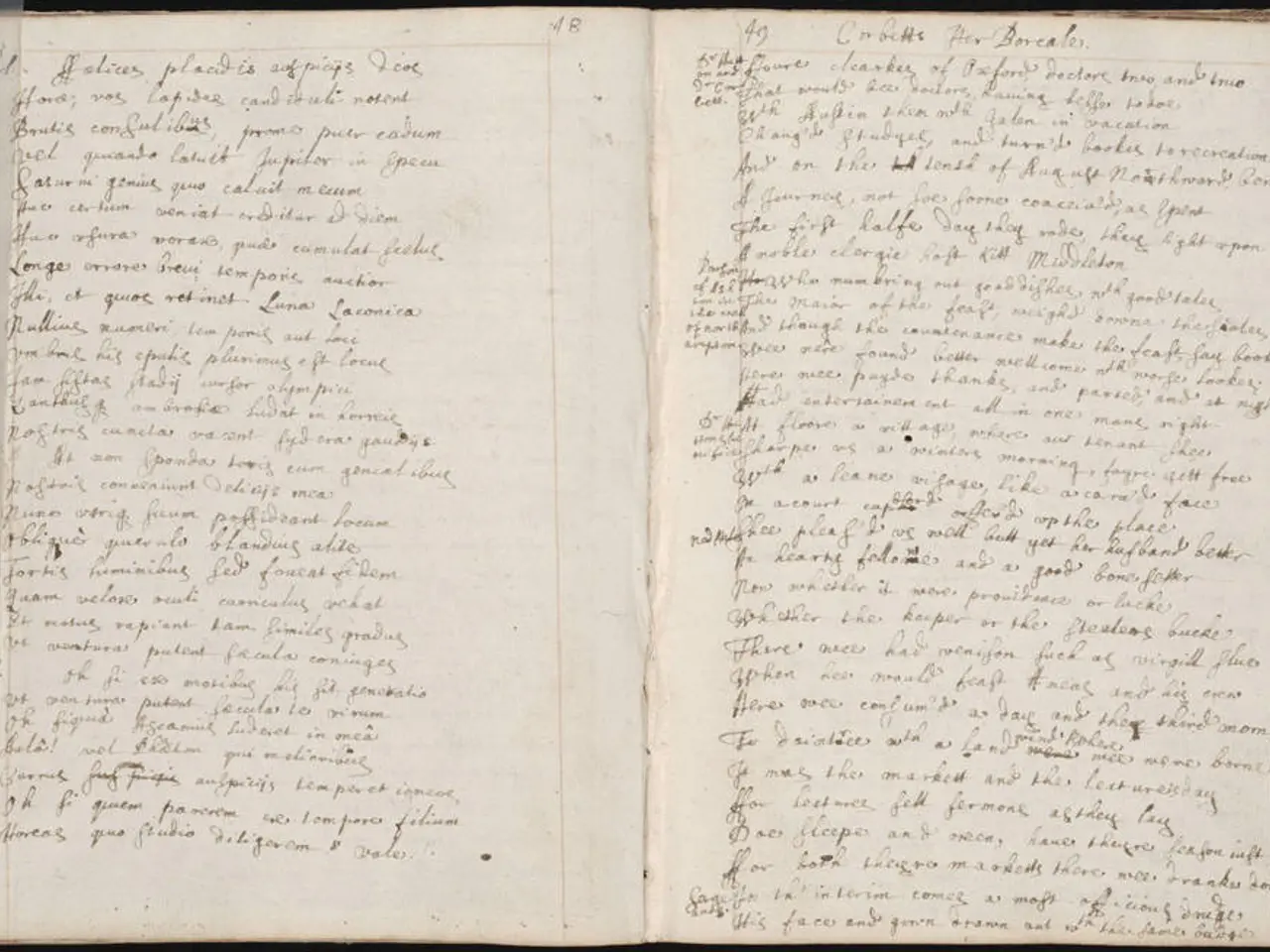Guidelines for Word Counts in IB IA, Extended Essay, along with Recommendations, Warnings, and Potential Consequences
The International Baccalaureate (IB) has set specific word count limits for the Internal Assessments (IAs) and Extended Essays (EEs) across various subjects. These limits are designed to ensure that the work is focused, manageable, and comprehensive.
For instance, the word count limit for a Psychology IA is 2,000 words, while for a Chemistry IA, it is 2,200 words. The Extended Essay (EE) has a maximum word count of 4,000 words for all subjects. It's essential to note that exceeding the word count limit can result in critical analysis, evaluation, or conclusions being ignored, potentially hurting the grade.
Similarly, writing too little for an IA can indicate insufficient depth, reducing the score. For example, the word count limit for a Geography IA is 2,500 words, and for a Business Management IA, it typically falls within a 1,500 to 2,000 words range.
Being concise by avoiding filler phrases, repetition, or unnecessary explanation can help stay within the word count. Planning the structure of the work and allocating a rough word count to each section is also recommended. Using appendices for raw data, large tables, or supplementary materials can help keep the word count in check.
IB examiners will not consider any content beyond the stated word limit for an Internal Assessment (IA) or Extended Essay. Therefore, it's crucial to use word count tools in the document editor to check section totals during drafting to ensure adherence to the word count limit.
The IB has strict penalties for exceeding word limits on both IA and EE. Work that surpasses the word count may have marks capped or reduced because exceeding the limit indicates insufficient conciseness and could give an unfair advantage. Conversely, a submission falling significantly short of the word count might fail to demonstrate adequate depth, analysis, or coverage expected by the IB, resulting in lower marks.
For IAs like Economics, adherence to the word count demonstrates focused analysis; including only relevant content within limits is key to meeting IB criteria. The word counts typically exclude elements such as titles, contents, references, diagrams, and appendices, but the core text must respect the limits.
To help students stay on target and maximize marks, resources like RevisionDojo offer checklists, word count planners, and exemplar IAs and EEs. By using these tools, students can ensure they meet the specific word count requirements for their subject and avoid penalties.
In summary, students should aim to stay at or just below the prescribed word count for their specific subject IA or EE, ensuring concise but complete work to meet IB requirements and avoid penalties. The exact limits depend on the subject, with Economics IA capped at 800 words, ESS IA allowing up to 2,250 words, while the EE maximum is 4,000 words overall.
An effective strategy for education-and-self-development, such as the International Baccalaureate (IB), involves engaging in online-education platforms to enhance learning. Using word count tools within document editors can help students create focused, manageable, and comprehensive Internal Assessments (IAs) and Extended Essays (EEs) that adhere to the IB's specific word count limits. For instance, an Economics IA should be concise while demonstrating focused analysis, aiming to stay within the 800-word limit. Meanwhile, an ESS IA can reach up to 2,250 words, and the Extended Essay (EE) should not exceed 4,000 words.




